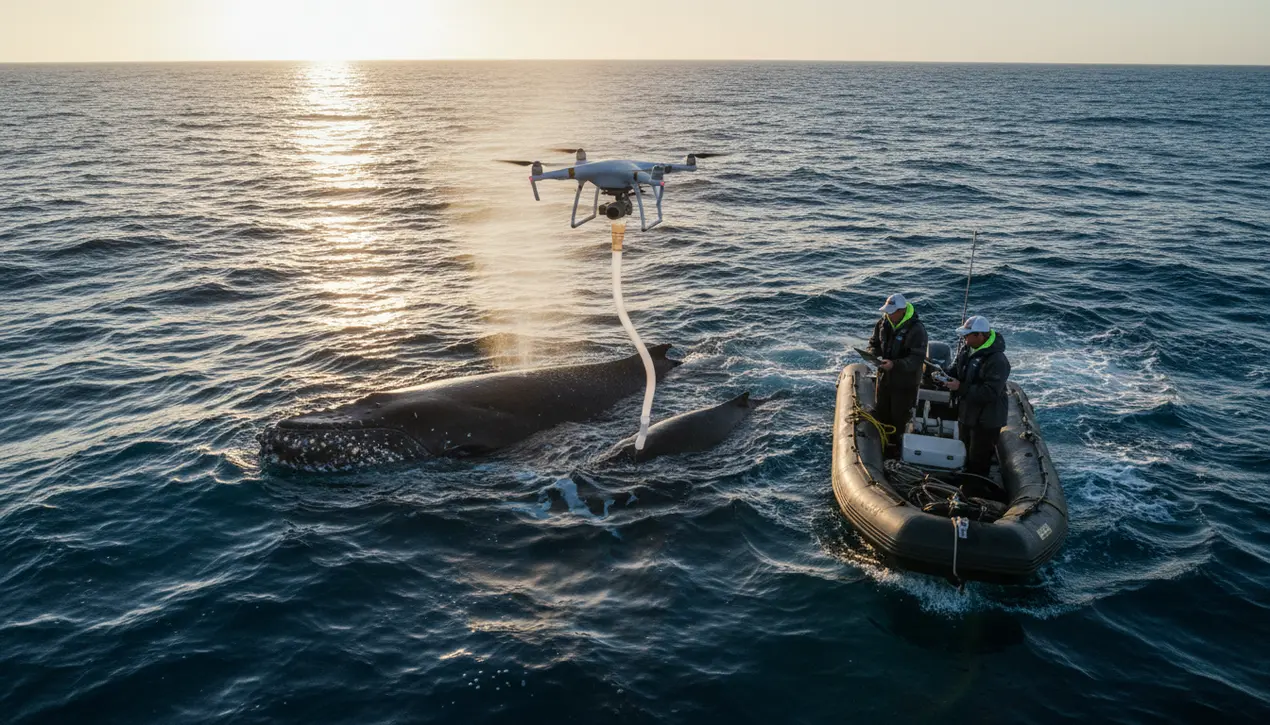
SciencebiologyMarine Biology
Eyes in the Sky: How Drones Are Revolutionizing Marine Mammal Science
TH
Thomas Green
2 days ago7 min read9 comments
The ocean's immense, opaque expanse has long been a barrier to scientific discovery, a domain where human presence is disruptive and limited. Traditional marine mammal research relied on brief sightings from boats or perilous in-water encounters, offering only fragmented insights.This approach is now being fundamentally transformed by a quiet revolution occurring just above the water's surface. Aerial drones are providing scientists with an intimate, persistent, and non-invasive vantage point, reshaping the field of marine mammalogy with the same profound impact the microscope had on biology.The capability to monitor a family of sperm whales continuously—tracking their travel, social interactions, and even their health—from a silent, hovering platform is no longer science fiction. Deployed from small research vessels, these drones capture high-resolution imagery and data without the intrusive noise of ship engines, allowing animals to behave naturally.This methodology is generating an unprecedented torrent of information, from calculating a blue whale's blubber thickness to monitor its condition, to decoding the sophisticated hunting techniques of orcas. The ramifications extend far beyond simple observation.While population surveys have gained remarkable accuracy, the true power lies in physiological and conservation applications. Scientists can now safely fly a drone through the moist exhale of a surfacing whale, collecting samples to analyze stress hormones, DNA, and pathogens—a feat once considered nearly impossible.In critical habitats, such as the waters off New England, drone footage is providing irrefutable evidence of vessel collisions and entanglement scars on endangered North Atlantic right whales, catalyzing urgent conservation measures and shipping regulation reforms. This technological leap mirrors the spirit of deep-space exploration, but it is directed inward, finally granting us clear access to the frontier that dominates our own world.The path forward is not without its obstacles, including regulatory frameworks, battery limitations, and the imperative to minimize any potential disturbance from the drones themselves. Yet, the direction is unmistakable.We are transitioning from an era of distant speculation to one of intimate, detailed revelation. With these aerial sentinels as our guides, we are no longer mere outsiders looking in; we are quiet companions in the whales' world, gaining a perspective that is both expansive and deeply respectful, fundamentally rewriting our understanding of marine life with every flight.
#drones
#marine mammals
#research
#aerial observation
#technology
#featured
Stay Informed. Act Smarter.
Get weekly highlights, major headlines, and expert insights — then put your knowledge to work in our live prediction markets.
Related News
Comments
Loading comments...
© 2025 Outpoll Service LTD. All rights reserved.